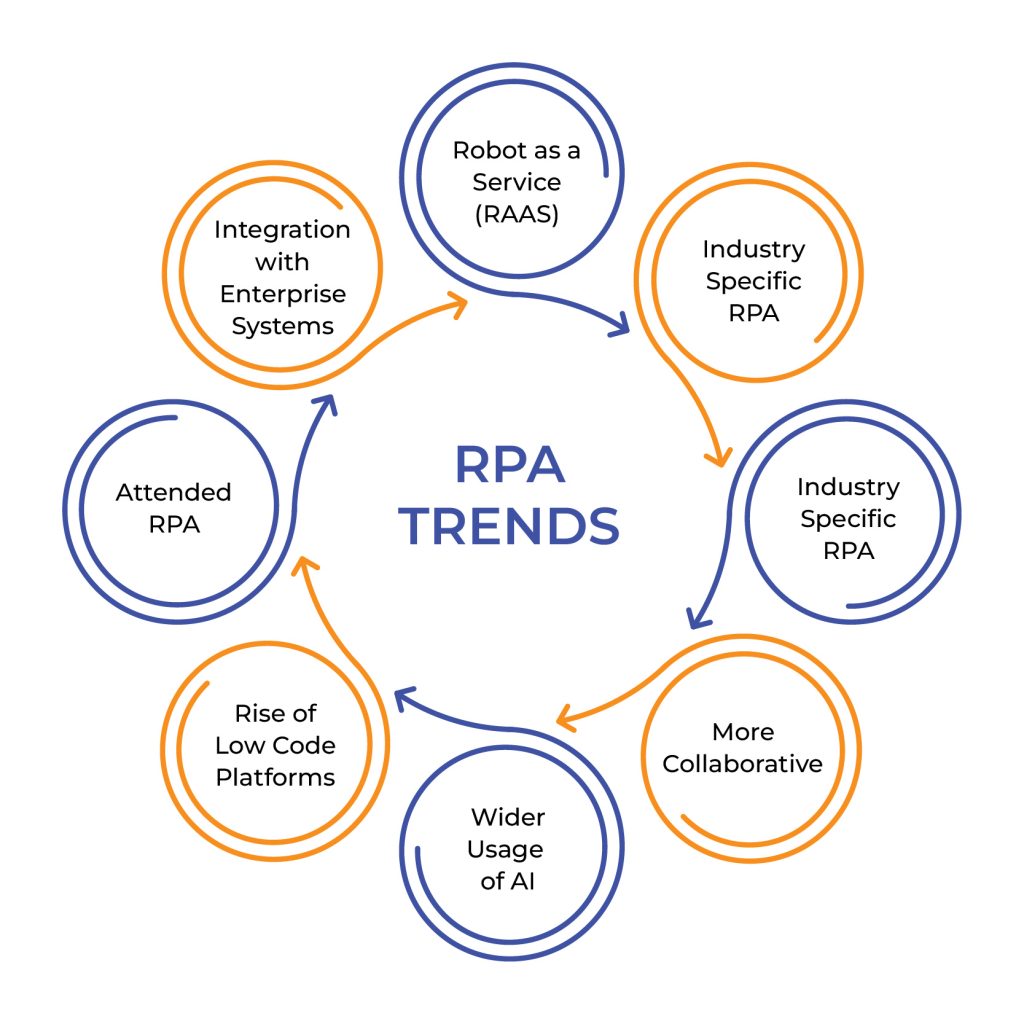The Silent Revolution: How RPA is Changing Industries Unnoticed

Client Partner, Pearson, North America
Swift AI Integration and Deployment with Quixl, AI accelerator. Request a Demo

Client Partner, Pearson, North America
In an era where technological advancements loudly proclaim their presence, Robotics Process Automation (RPA) emerges as a unique exception. This groundbreaking technology is quietly revolutionizing the very backbone of various industries, from finance to healthcare, without the usual fanfare. RPA, a blend of innovation and efficiency, operates subtly yet powerfully, redefining operational processes. Gartner, Inc. recently reported that the global corporate spend on RPA software is expected to increase by nearly 20% in 2022. Companies were projected to spend $2.9 billion on RPA software in 2022, and the worldwide RPA software market will continue to experience double-digit growth in 2023. This article delves into the depths of RPA’s transformative impact, uncovering the significant, yet often overlooked, changes it is bringing about in numerous sectors. Here, we explore the essence of this silent revolution, revealing how RPA is reshaping the business world in profound yet understated ways.
Imagine a tool so adept at blending into the workplace fabric that its presence is almost invisible, yet its impact is monumental. That’s the essence of Robotics Process Automation (RPA). By mimicking human actions in digital systems, it performs tasks faster and with greater accuracy. Initially, RPA was focused on simple tasks, as the technology matured, RPA underwent a transformative evolution. The integration of artificial intelligence (AI) and machine learning (ML) marked a significant leap forward. This convergence expanded RPA’s capabilities, enabling it to not only execute predefined tasks but also to adapt and learn from new data inputs. This progression allowed RPA to handle more nuanced and complex processes, thus broadening its applicability across various business functions.
A key milestone in RPA’s evolution was its integration into cloud computing. This development democratized access to RPA technologies, allowing businesses of all sizes to leverage its benefits. The cloud-based RPA solutions offered scalability, flexibility, and cost-effectiveness, further enhancing its appeal to a wider market.

Source: Top 9 RPA Trends in 2024: Revolutionizing the Future (theecmconsultant.com)
The influence of Robotics Process Automation (RPA) extends far beyond the confines of any single industry, permeating a multitude of sectors with its transformative capabilities. This remarkable technology has proven its versatility and adaptability, showcasing its ability to enhance efficiency, accuracy, and productivity across various business landscapes.
In Finance: The financial sector, known for its complex and voluminous transactions, has embraced RPA to streamline operations. As per Gartner, around 80% of finance leaders have implemented or are planning to implement RPA. RPA tools in finance are adept at handling tasks such as data reconciliation, transaction processing, and compliance reporting. By automating these processes, RPA not only accelerates the workflow but also significantly reduces the likelihood of human error, a critical factor in an industry where precision is paramount. This automation leads to more robust compliance structures, enhanced operational efficiency, and a better allocation of human resources to strategic tasks.
In Healthcare: The healthcare industry faces the constant challenge of managing vast amounts of patient data while ensuring accuracy and compliance with stringent regulatory standards. Here, RPA plays a pivotal role in automating patient appointment scheduling, billing, and record maintenance. By doing so, RPA frees up medical professionals to focus more on patient care rather than administrative tasks. Moreover, the accuracy of RPA in processing patient information enhances the quality of care by ensuring that critical health data is managed correctly and efficiently. Gartner reports that within the next three years, “50% of US healthcare providers are expected to invest in RPA.” They add, “Amid a challenging scenario of diminishing payments and the need to enhance outcomes, patient experiences, and credentials, healthcare providers are in a critical situation. Therefore, any technology adopted to enhance service delivery and operational efficiency must also focus on cost optimization.”
In Manufacturing: RPA has also made significant inroads in the manufacturing sector. It’s utilized for automating supply chain operations, inventory management, and quality control processes. By doing so, RPA not only streamlines these processes but also enables real-time monitoring and decision-making. This results in a more agile and responsive manufacturing process, improved product quality, and a reduction in operational costs. In a sector where timing and precision are key, RPA’s ability to optimize production schedules and inventory levels is invaluable.
Despite its advantages, RPA implementation faces challenges like seamless integration with existing systems and the need for employee adaptation. Integrating RPA with existing IT infrastructures, particularly legacy systems, demands careful planning to ensure seamless operation. Employee adaptation is another hurdle; it’s crucial to address job security concerns and illustrate RPA’s role as a workforce enhancer. Organizations must manage expectations realistically, understanding RPA’s capabilities and limitations. Ethical and compliance issues, especially in data-sensitive sectors, require adherence to regulatory standards. Lastly, scalability and maintenance are essential for RPA’s long-term efficacy, necessitating regular updates and adaptability to evolving business needs and technologies. Addressing these challenges is key to leveraging RPA’s full potential.
The future of Robotics Process Automation (RPA) is poised for significant growth, with its integration into more complex and intelligent systems. As RPA continues to evolve, it will increasingly become a staple in business operations, offering enhanced efficiency and decision-making capabilities. The potential for RPA to seamlessly interact with emerging technologies like AI and machine learning suggests a landscape where its impact transcends current applications. The trend towards robotic process automation shows no signs of diminishing. Instead, its appeal is extending beyond large corporations to the small and medium enterprise (SME) sector. A survey conducted by Xerox highlights this shift, with 80% of SMEs acknowledging that process automation is crucial for their continued existence.
In conclusion, RPA’s journey from a functional tool to a strategic business asset marks a silent yet profound revolution, reshaping industries with its unobtrusive yet impactful presence, setting the stage for a more automated, efficient future in business operations.

By integrating AI technologies, Integra helps organizations enhance digital accessibility, ensuring that digital platforms and content products are accessible and usable for everyone...more

The pandemic underscored the strategic importance of learning and development (L&D) within corporate structures, with 62% of business leaders recognizing it as either highly important or critical to business success. Yet, despite this recognition, a persistent challenge remains. Before and during the pandemic, 55% of organizations reported an inability to effectively measure the impact of […]..more

Discover how iLancer streamlines freelance operations with centralized project management, communication tools, and automated payment systems...more

The European Accessibility Act – Promoting Digital Inclusivity Digital accessibility is increasingly acknowledged as a fundamental human right, vital for social inclusion and equal opportunity. The European Accessibility Act (EAA) spearheads initiatives to ensure that all digital products and services are accessible, particularly for individuals with disabilities. As a cornerstone of legislative efforts towards inclusivity, […]..more

Explore the profound impact of AI on the media and entertainment sector, from revolutionizing content production to redefining customer interactions...more

As artificial intelligence (AI) evolves, its resonance spreads across various sectors, notably in the publishing industry. This article explores the dynamic interplay between human linguistic expertise and AI-driven, language models, focusing on how their integration reshapes publishing. We examine both the technical aspects and the practical applications of AI in publishing, alongside the intrinsic human […]..more

© 2023 | Integra Software Services Pvt. Ltd.